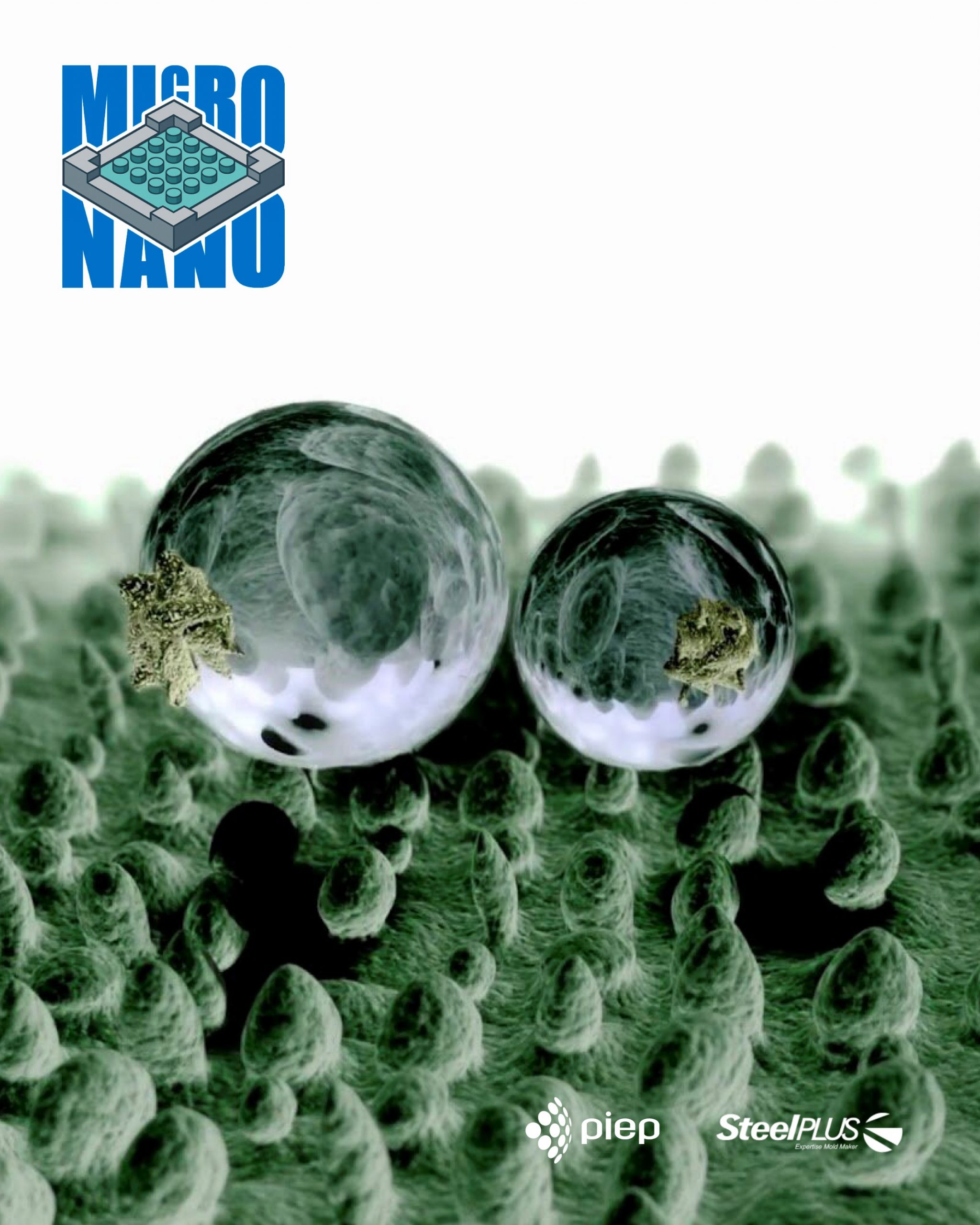


MICRO-NANO structuring for injection moulding tools
Micro-Nano is a project that aims to meet the constant evolution of industrial markets that increasingly demand high added value products that offer new functionalities at a reduced cost. In this sense, the Micro-Nano project aims to develop a product in the form of an advanced tool – an injection mould – with innovative structures, designed specifically by and for Steelplus, capable of conferring functional properties to the surface of plastic parts.
It is a development project promoted by SteelPlus with the support of PIEP. SteelPlus is an SME specialised in producing injection moulds for the plastics industry, with consolidated experience in several sectors such as aeronautics, automotive, medicine, cosmetics, domestic, and electrical. As part of this project, SteelPlus will therefore develop an injection mould with microstructured moulding surfaces. The expertise of SteelPlus and PIEP will be combined to develop biomimetic structures using a productive ultra-short pulse (pico and femto) laser texturing technology. Surface treatments will also be considered to ensure the durability of the microstructures in the mould and facilitate the extraction of the plastic parts.
At PIEP, the production of plastic components, with the replication of the developed microstructures, will result from the optimisation of the microinjection process using dynamic mould temperature control technologies. The differentiation in obtaining these functional properties stands out, without the need to resort to any post-injection coating, being even more differentiating when considered in bio-based polymers and with biodegradability characteristics duly qualified for high-added value sectors such as the medical sector (e.g., polylactic acid with FDA approval from Musashino Chemical Laboratory).
Thus, in this project, the hierarchical microstructures and thermal and surface treatments of the moulding steel that provide better cost, cadence, durability, and productive quality of the molds and thermoplastic components obtained will be identified, enabling a differentiating and competitive commercial offer for a wide portfolio of products and application sectors.



